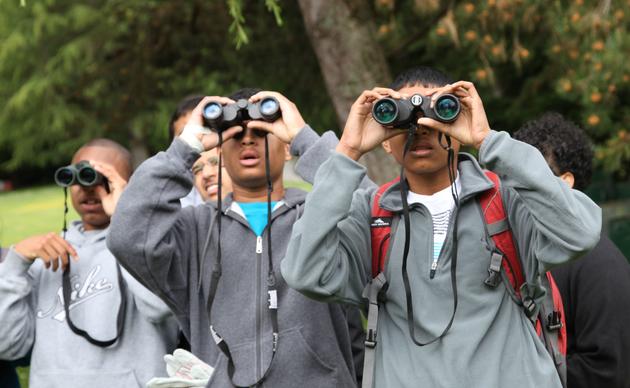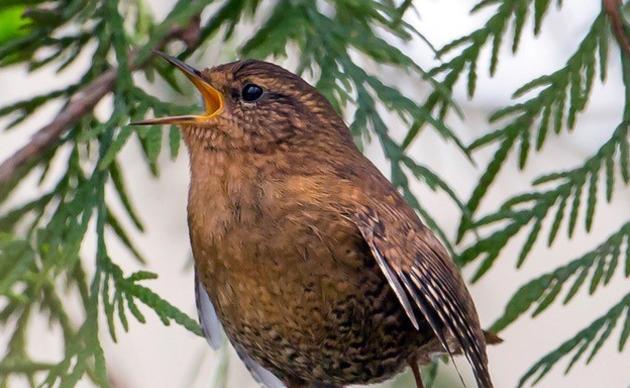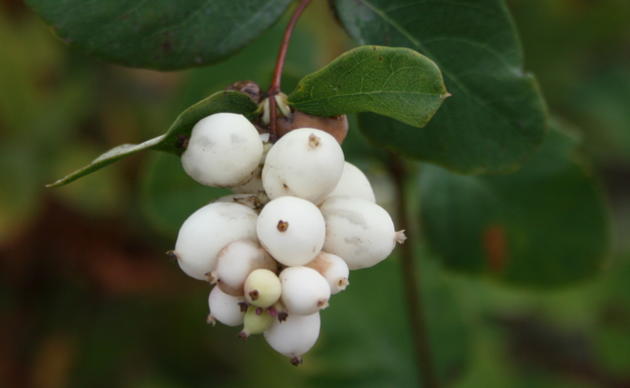The History of Seward Park & Ye Old Seward Park Inn
Neck and Nose
There is no known archaeological evidence of First Nations people on the peninsula, though the Duwamish people were known to use the area heavily. They referred to the peninsula as skEba’kst, the word for nose – which described rocky points that were evident on the islands north and south sides before the lake level was lowered due to the construction of the ship canal. The marshy isthmus was called cka’lapsEb, or “neck”.
The area surrounding Seward Park was prime hunting and fishing grounds, and the cattails which flourish on the shores of Lake Washington were used by the Duwamish to build reed houses in the summer months.
Settling and Change
The peninsula was purchased in 1890 by William E. Bailey, a Yale graduate and real-estate investor from Pennsylvania, for $26,000. The Park was named Bailey Peninsula in his honor following his heavy investment in buildings and real estate after the Great Seattle Fire. Bailey would later purchase The Seattle Press-Times a precursor to The Seattle Times. He returned to Pennsylvania after the Panic of 1893.
In the 1890’s the Superintendent of Public Parks proposed selling City Park, now known as Volunteer Park, to fund the purchase of the Bailey Peninsula. He felt that the city would benefit from a new southeast park. However this plan never came to fruition, as Bailey Peninsula was deemed to be largely inaccessible due to its wilderness location.
A Comprehensive System
In 1903, the City of Seattle commissioned the Olmsted Brothers, a landscape firm, to prepare a ‘Comprehensive System of Parks and Boulevards”. The first proposal listed by the Olmsted Brothers was the purchase of Bailey Peninsula, which was outside of the city limits at the time, before it was developed. In 1908 the Olmsted Brothers amended their original report to include newly annexed areas, including Rainier Valley.
In 1911, the city of Seattle purchased Seward Park for a sum of $322,000. The Park was named for William Seward, Lincoln’s Secretary of State, who was responsible for the purchase of Alaska from Russia in 1867. The opening of Alaska ushered in a period of prosperity for the city of Seattle, which benefitted greatly from hopeful prospectors using it as the main transportation and supply hub before departure to the Yukon.
The Olmsted Brothers were awarded the contract to develop Seward Park, and was one of the thirty-seven Seattle City Parks that they designed. The original Olmsted Plan for Seward Park envisioned the peninsula as a forested haven for water sports enthusiasts complete with boat docks.
Seasonal fluctuations in lake levels used to flood the low, marshy ‘neck’ of the peninsula, thus isolating it into a wintertime island. The Olmsteds originally proposed the construction of a land bridge to guarantee year round access. In 1911 the neck was filled to create a grassy meadow favored today by sunbathers and Frisbee players. The 1916 construction of the ship canal which connected Lake Washington with Puget Sound lowered the level of the lake by nine feet. This, coupled with the infill of the marshy neck, made Seward Park significantly more accessible to automotive traffic. In 1919 the boat docks were added, to this day, Andrews Bay is a popular boating destination and is one of the few spots on Lake Washington where overnight mooring is still allowed.
Ye Seward Park Inn
In the early 1920’s Mrs. Redfield ran a confectionary at in the Sanitary Market building in Pike Place Market. Frank was a Seattle firefighter. In 1922 Catherine acquired a contract to operate two concession stands in Madrona Park. She made significant improvements to the facilities at that park before acquiring the Seward Park contract.
The Redfields constructed the Seward Park Inn at their own expense, and the decision to hire the noted architect Alban Shay to design the building was made by Catherine. Shay was originally from Ohio and graduated from the University of Pennsylvania in 1922. After working with prominent architectural firms in New York, Shay joined the firm Bebb & Gould in 1924. This firm is noteworthy for is contributions to Seattle’s architecture and its designs included the plan for the University of Washington campus. Gould himself designed eighteen of the buildings on campus including the spectacular Suzzalo Library.
After his tenure with Bebb & Gould, Shay opened a private practice in Seattle in 1927. Our building was one of his first designs in the area. Shay later became an extremely influential designer of residential properties throughout Seattle. The Tudor Revival architecture, sometimes referred to as Mock Tudor or “Tudorbethan”, was popular in the 1930’s and evokes the idyllic charm of a quaint country house set upon the edge of the forest. Shay’s choice reflects not only his influence from the University of Pennsylvania Architectural Program, but also echoes the spirit of Bebb & Gould.
In the ‘20’s many concessioners operated stands within the park, however the Seward Park Inn was the first permanent building in the park as well as the most substantial and aesthetically pleasing. Though officially called the Seward Park Inn, the building was often called “Ye Seward Park Inn”.
The economically trying climate of the 1930’s was challenging for Seattle. The concession stand was no exception. In 1933-34, in an attempt to augment slow concession sales, Catherine applied for a liquor permit to sell beer and appealed for permission to install a gasoline pump. Though the license for beer sales was granted by the Washington State Liquor Control Board, community opposition to liquor sales in the park forced her to stop after a few months. The gasoline pumps were never installed. A string of hardships forced the Redfields to relinquish their lease in 1943. Concessions continued to operate out of the building after the Redfields left, and the park foreman used the second floor of the building as a residence until 1968.
A Rough and Tumble Past
In the 1920’s the park was closed nightly at 11 o’clock to prevent “rowdyism”. Later, in 1971 the paved loop around the park’s perimeter was closed to automotive traffic after residents in the area complained that people used loop for washing clothing, car races, and for uses other than “Park Purposes”.
Friends across the Pacific
In 1931 Seward Park was the proud recipient of an 8-ton Taiko Gata Stone Lantern. This gift was sent by the city of Yokohama, Japan to thank Seattle for it’s assistance after the Great Kanto Earthquake. This terrifying earthquake struck the Kanto Plain and leveled the cities of Tokyo and Yokohama on September 1st, 1923. The Lantern is a replica of a stone lantern at Momoyama Palace in Kyoto, Japan. As a gesture of gratitude, the city of Seattle sent the city of Yokohama one thousand roses. Ancestors of those roses can still be found today in the Yokohama Municipal Children’s Botanical Garden.
Music in the Park
The Amphitheater was built in 1953 in the hope that it would replace the band shell that was removed from Volunteer Park as the primary source of outdoor entertainment in Seattle. Set in a gently sloping clearing ringed by trees and with a spectacular view of Mt Rainier on a clear day, it seemed like the ideal location. However, contrary to this advertisement’s claims of “ample parking”, the popularity of the concert series led to heavy congestion on the park’s one way roads, rowdy behavior by concertgoers, and revealed a serious lack of parking. The last Music in the Park Series was held in 1960.
Nature and Sport
Seward Park has always been a haven for wildlife and recreation. In 1935, the fish hatchery was built to increase the stocks of sport fish in Lake Washington in order to further the Olmsted vision of a water and forest recreation Mecca, and make the area into a ‘Fisherman’s Paradise”. The hatchery is no longer operational.
In the 1960’s, fishing piers were constructed by the King County Outdoor Sports Council around Lake Washington. The pier constructed on the Northwest side of the park was named for the Reverend U.G. Murphy in recognition of his advocacy for better fishing opportunities for youth and senior citizens.
Today, Seward Park houses our Center, whose mission to inspire discovery, exploration and stewardship of the natural world is embodied in our programs, which teach the members of our community and their children important lessons about preservation of ecosystems and habitat.
The History of Seward Park was well documented by Donald Sherwood, a Parks Engineer for Seattle Parks and Recreation for over 22 years. Sherwood compiled maps and historical data on many of Seattle’s Parks and his efforts led to the preservation of many valuable historical documents that may have been lost forever. Much of the information on this page is taken from his account. More on Donald Sherwood and his incredible legacy.
We also used information contained in Karen Gordon’s report prepared for The City of Seattle’s Landmarks Preservation Board on May 21st, 2003 (LPB 123/03)
Please also visit the Friends of Seward Park website. They have compiled a great deal of history on Seward Park and the surrounding community, including a fascinating look at the geological forces that shaped our area.
Finally, we would like to extend a warm thanks to the City of Seattle Municipal Archives for the use of the wonderful photography present on this page.
How you can help, right now
Get Involved
We rely on the talents of our volunteers to promote the efforts of the Center. Whether you're a budding naturalist or an organized decision-maker, we need you!
Get Native
Incorporating native plants into your yard or balcony garden provides important habitat for birds and promotes biodiversity.




